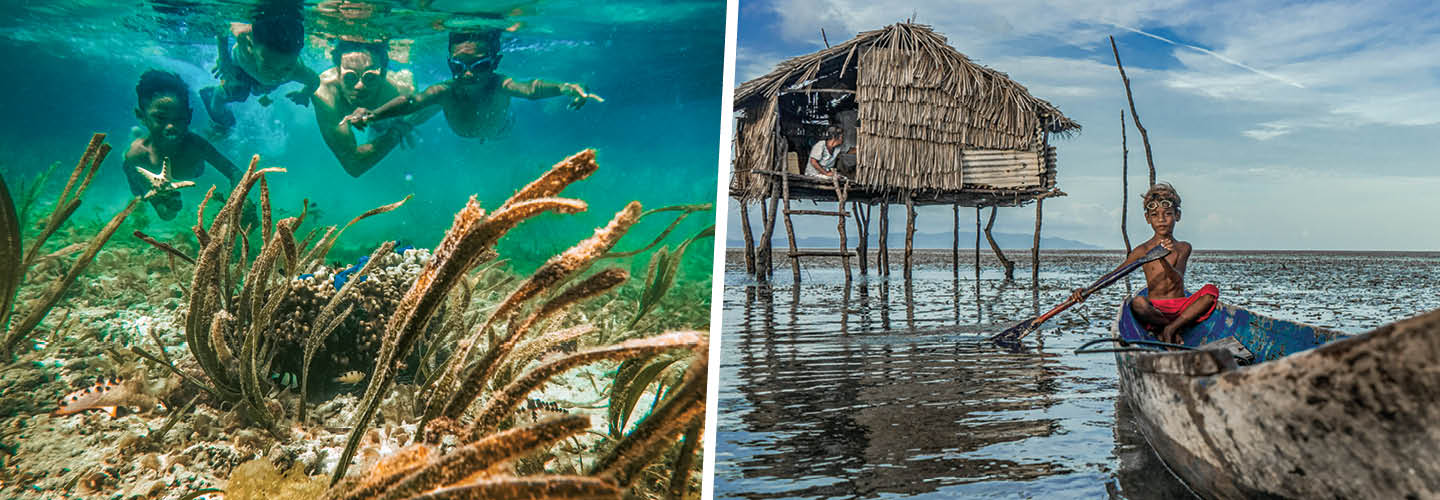Leaving her hut that hovers on stilts above crystal blue water, Zausiyah gets into her boat at sunrise and rows out to sea. She finds a choice spot, stores her paddle, baits four hooks, and tosses her line down into the deep waters of the Molucca Sea in Indonesia.
Sometimes the hooks come back empty. Other times she catches four fish in one throw.
“Fishing is the only thing we, the Bajo people, know,” says Zausiyah, referring to the Indigenous group she belongs to. “I started fishing when my husband went blind. I’m tired, but this is our only way to earn a living.”
Zausiyah, who like many Indonesians goes by one name, says she’s in her 60s. Her husband, Mawardi, around 72, lost most of his sight after an accident involving explosives he was using to fish.
The Bajo, sometimes spelled “Bajau,” have made their living by deep-sea fishing in Southeast Asia for centuries. Once mainly a nomadic people, they spent a large part of their lives in their boats or in offshore huts. Today their communities are scattered throughout the waters off the coasts of Indonesia, Malaysia, and the Philippines. Indonesia is home to about 180,000 Bajo.
Zausiyah lives in a hut on stilts above the crystal blue water of the Molucca Sea in Indonesia. She gets into her boat at sunrise and rows out to sea. She finds a choice spot and stores her paddle.
Then she baits four hooks and throws her line down into the deep waters.
Sometimes the hooks come back empty. Other times she catches four fish in one throw.
“Fishing is the only thing we, the Bajo people, know,” says Zausiyah, referring to the Indigenous group she belongs to. “I started fishing when my husband went blind. I’m tired, but this is our only way to earn a living.”
Zausiyah, who like many Indonesians uses one name, says she’s in her 60s. Her husband, Mawardi, is about 72. He lost most of his sight after an accident involving explosives he was using to fish.
The Bajo, sometimes spelled “Bajau,” have made their living by deep-sea fishing in Southeast Asia for hundreds of years. They used to mainly be a nomadic people. They spent a large part of their lives in their boats or in offshore huts. Today their communities are scattered throughout the waters off the coasts of Indonesia, Malaysia, and the Philippines. Indonesia is home to about 180,000 Bajo.

